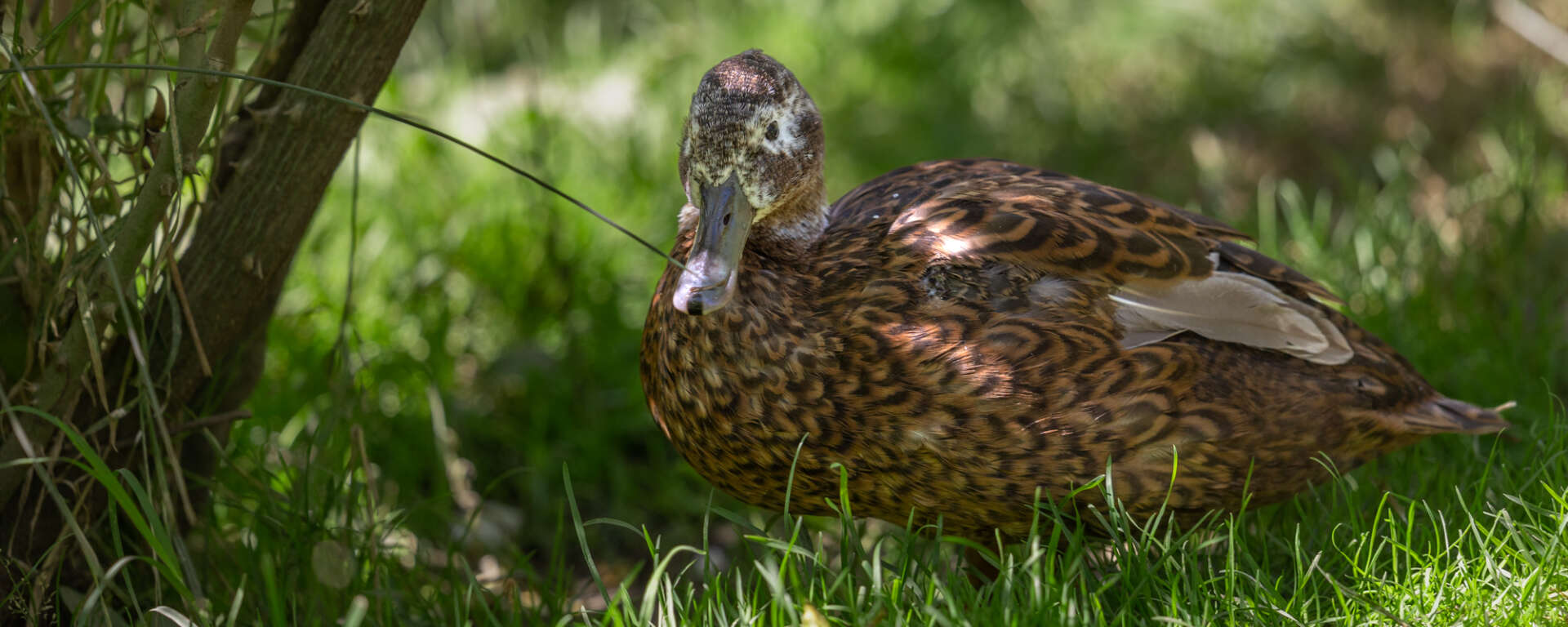The Incredible Story of the Laysan Duck
Posted in: Conservation, Safari Spotlight
People usually come to Safari West to see the showstoppers—giraffes, rhinos, cheetahs, or zebras. While these are all incredible animals, one lesson we try to teach on our tours is that the size and charisma of an animal is not always matched with the depth of that animal’s story. This lesson is perhaps best taught by a nondescript, chestnut-brown bird that our visitors rarely see, and even more rarely ask about, and yet has one of the most incredible stories of resilience and survival in the world—the Laysan duck.
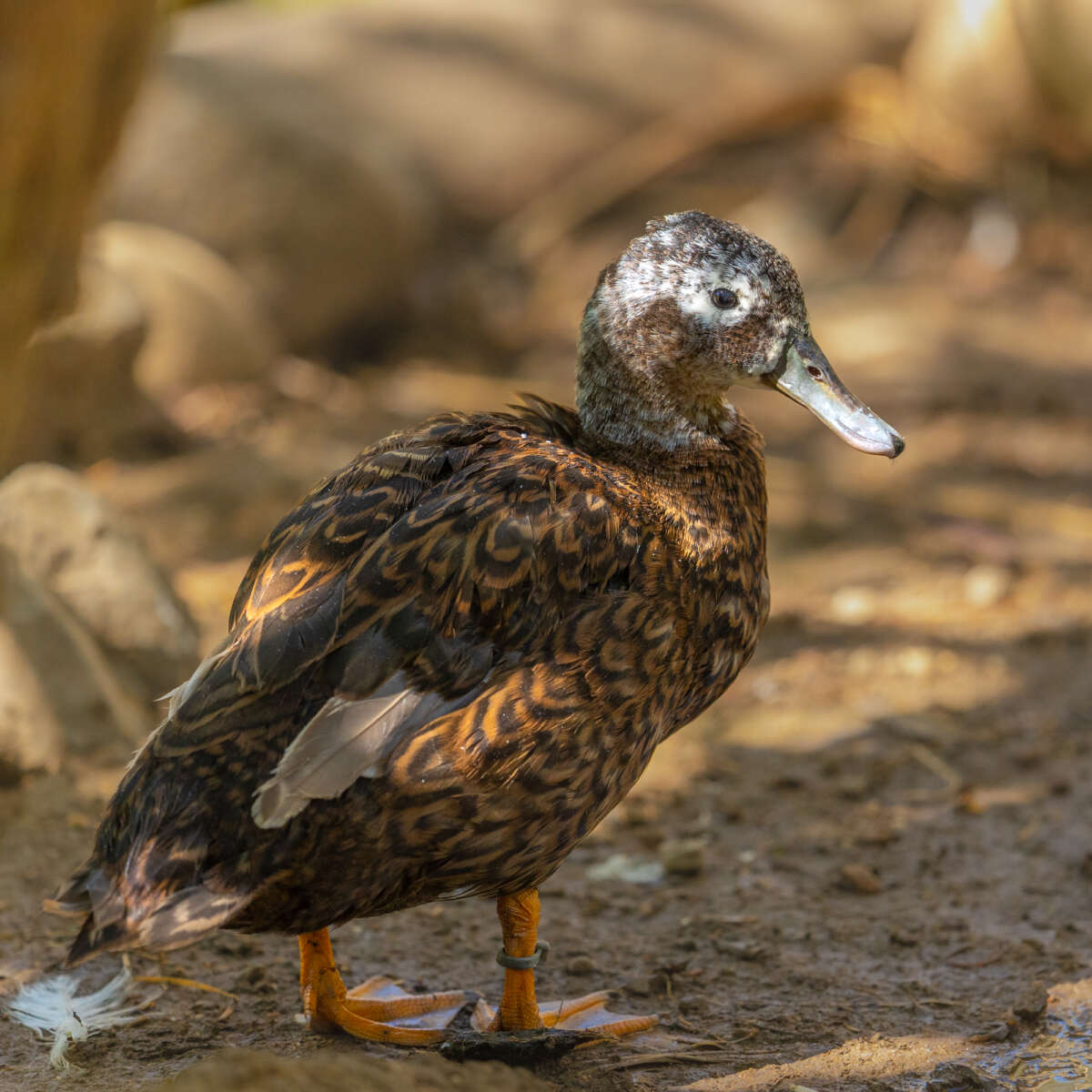
Laysan Duck at Safari West, by Mark Pressler
A One-two-three Punch of Decline
The conservation story of the Laysan duck starts with a look into the evolutionary history of mammals. Mammals are such a successful form of life that they have colonized most of the planet, and have affected the evolution of birds, reptiles, and many other groups of animals. But before humans came along, mammals had missed a few places on Earth—notably, islands in the Pacific Ocean. Osteological, or bone evidence shows us that historically, Laysan ducks flourished on most, if not all hospitable islands along the Hawaiian archipelago.
From around 400 – 1000 AD, Polynesian expansion occurred throughout the Pacific. As humans moved from island to island, they left behind non-native mammalian predators. The Laysan duck evolved alongside avian predators, and responds to threats by freezing in place. This works great when a threat is flying above you, especially when under some cover, but does not work very well when a threat is standing right in front of you and using its nose to hunt you down instead of its eyes. Because of this, introduced mammal predators decimated Laysan duck populations on almost all of the Hawaiian islands. The final stronghold of this duck was Laysan, a small island about 800 miles Northwest of Kauai.
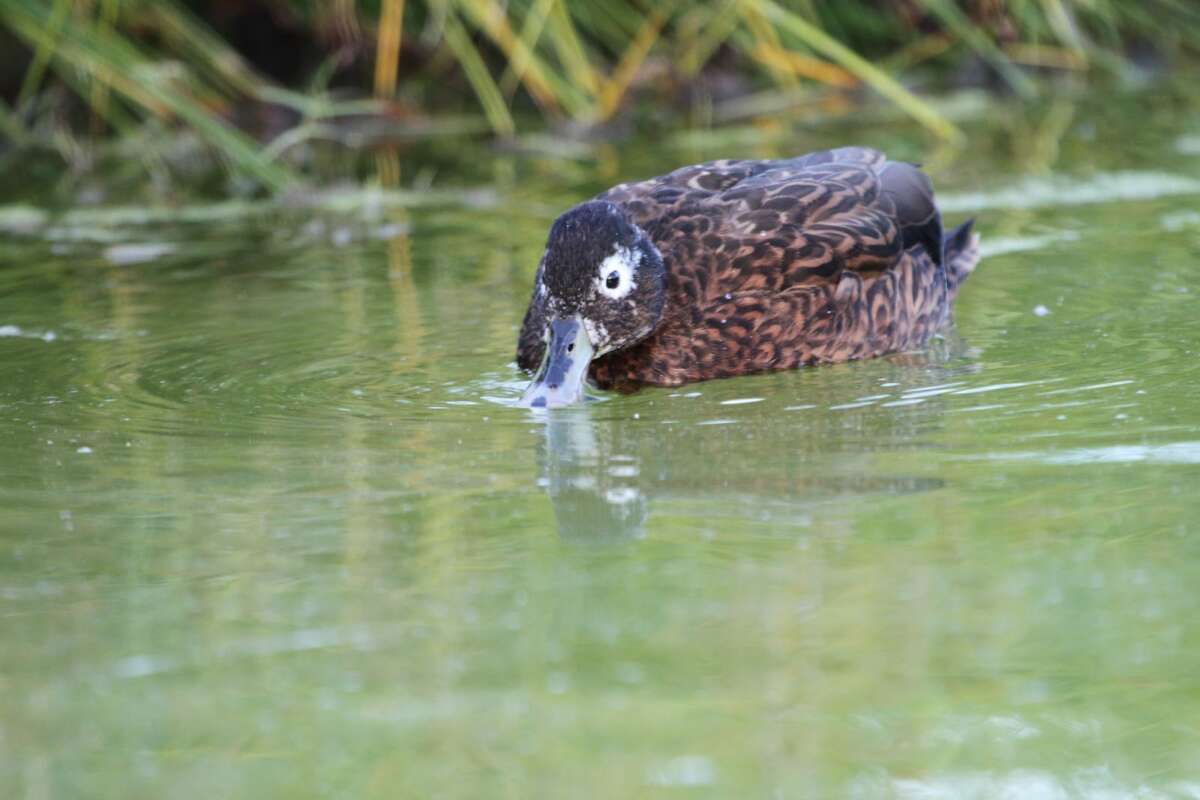
Laysan Duck swimming in the wild, by Michelle Reynolds
In the early 1900s, German chemists Fritz Haber and Carl Bosch changed the world with the development of the Haber–Bosch process, which allows us to efficiently convert atmospheric nitrogen into the ammonia used in fertilizers and explosives. Before this breakthrough, humans were only able to obtain ammonia through naturally occurring sources out in the world, and one of the main sources of naturally occurring ammonia was guano—bat and seabird poop. The increasing global demand for and acquisition of guano throughout the 1800s is known as the Guano Era, and is too complex to dive into here, but resulted in wars being fought, massive increases in national revenue in South America, and the colonization of more and more remote islands in the search of poop, including the island of Laysan. From about 1891 – 1904, western guano miners ravaged the ecology of Laysan. They shot Laysan ducks for food and sport, and in 1902 the population of the Laysan duck was estimated to be less than 100 individuals.
A common practice of colonizers at the time was to release prey animals such as rabbits onto whatever island they were extracting resources from, to then hunt for food throughout their stay. By 1909, guano mining had ceased on Laysan and it was declared part of the Hawaiian Islands Bird Reservation—but the rabbits remained. The island of Laysan is only about a mile long and a mile and a half wide, so expeditions in 1911 and 1912 were alarmed to find thousands and thousands of rabbits, which were causing a rapid deterioration of the island’s vegetation. These expeditions tried to lower the population of rabbits, but were not equipped to deal with a problem of that scale. By the time an expedition could be sent to remove rabbits from the island in 1923, Laysan was almost completely barren. Other bird species, such as the Laysan rail, Laysan millerbird, and Laysan honeycreeper, had all gone extinct as their habitat disappeared. Only 20 Laysan ducks were counted, and this was likely the entire population, as there was no remaining vegetation for them to hide in. There were only hundreds, rather than thousands of rabbits on the island now due to a lack of food, and complete rabbit removal was successful during this 1923 expedition.
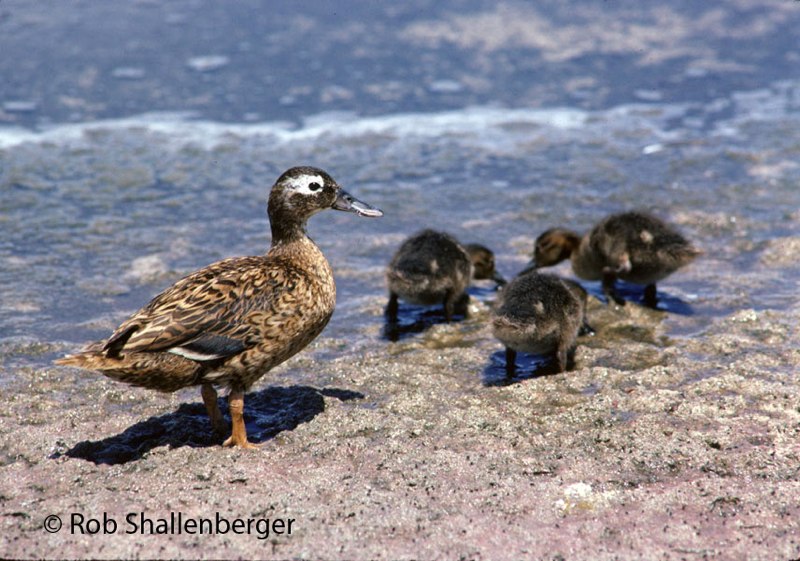
Laysan Duck with ducklings in the wild, by Rob Shallenberger, courtesy of Linda Elliot
A Miraculous Recovery
A return expedition in 1936 found that Laysan was covered in vegetation once again, although the palms and sandalwood trees previously found on the island never returned. Amazingly, that tiny population of 20 Laysan ducks had managed to survive as well, and a count in 1950 found 33 individuals. The population continued to grow as the island returned to a healthier state, and a population estimate made in 1980 with more rigorous surveying protocols tallied up to about 510 ducks!
Since 1980, the population on Laysan has had some major fluctuations between about 150 and 600 individuals. These fluctuations are largely due to droughts, a tsunami that briefly covered large portions of the low-lying island, and a parasite outbreak. In order to not have all of the Laysan duck eggs in one island basket, Laysan ducks were reintroduced to Midway Atoll in 2004 and Kure Atoll in 2014. Additionally, when the population reached 400 individuals in 1957, the decision was made to establish a captive population under human care. 44 birds were collected between 1957 and 1958, and were distributed among zoos in the United States, including the San Diego Zoo, the Honolulu Zoo, and the Philadelphia Zoo. This is how a pair of Laysan ducks eventually made it here, to Safari West!
Laysan is now part of the North-western Hawaiian Islands National Wildlife Refuge and the Papahanaumokuakea Marine National Monument, and was designated as a Research Natural Area by the US Fish & Wildlife Service in 1967. This means that the island is not open to the public, and can only be visited for scientific research monitoring, and Hawaiian cultural practices.
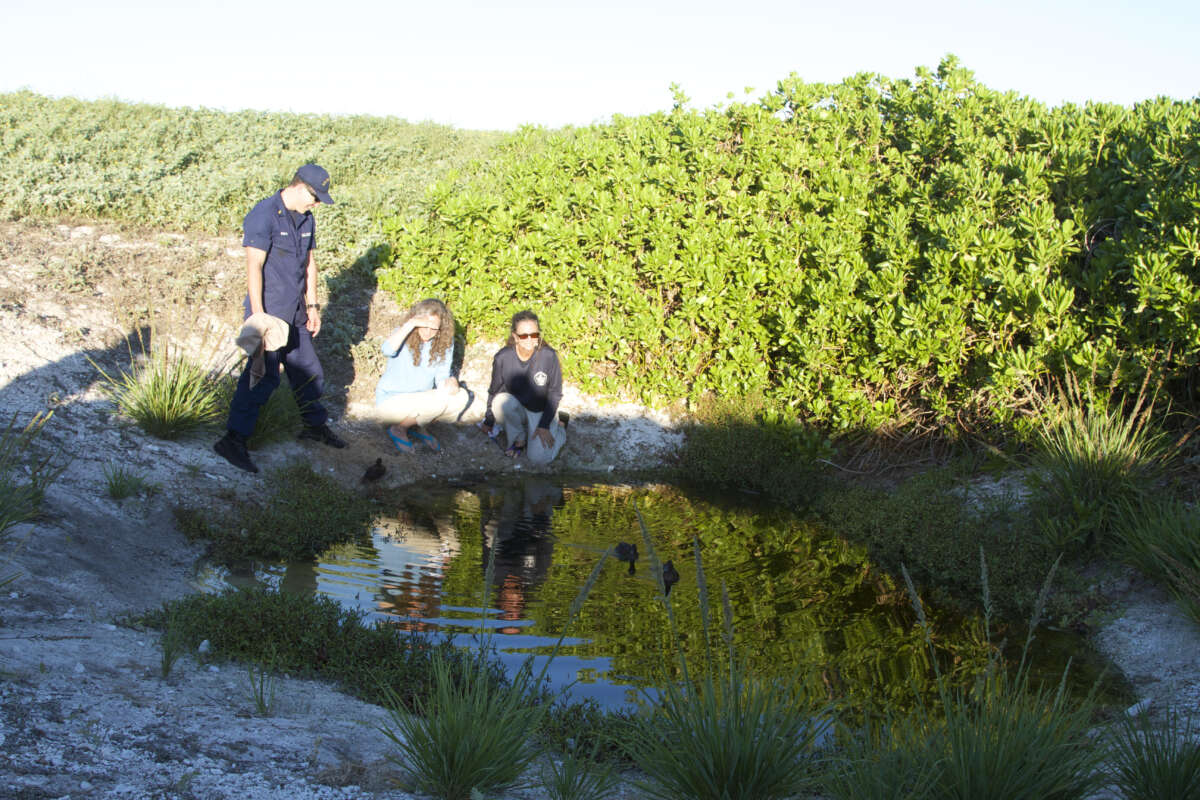
Laysan Ducks being released on Kure Atoll, courtesy of Linda Elliot
Current Day Conservation
I had the opportunity to speak with Dr. Michelle Reynolds, who is considered the world’s leading expert on Laysan ducks. She conducted her PhD dissertation on Laysan ducks, has lived on Laysan and Midway to work with these ducks, planned and led the translocations to Midway and Kure, served as the species expert for the state of Hawaii and for the US Fish and Wildlife Service, wrote the US Fish and Wildlife Service’s Laysan Duck recovery plan, and much more. She helped fill me in on the host of challenges associated with the conservation of this species today.
According to Dr. Reynolds, while the translocations of the Laysan duck to new islands is extremely helpful in reducing the risk of extinction, the population on Laysan is still the most stable. Midway’s population has already endured a tsunami overwash event since being reintroduced there, and Kure’s population often has failed breeding years due to dry conditions on the atoll. Both the Midway and Kure populations suffer from chronic avian botulism outbreaks. There are also difficult conservation management decisions where benefits and detriments must be carefully weighed—there is a current management action on Midway to drop a toxicant to kill invasive mice on the atoll, but Laysan ducks are vulnerable to accidental and secondary poisoning from this toxicant, so the ducks on Midway will be held in crowded conditions during this operation. While these translocations and new founder populations have successfully doubled wild population numbers, wildlife managers and conservation organizations must remain ever vigilant, as a particularly bad tsunami, avian botulism outbreak, or accidental invasive predator reintroduction could quickly devastate these fragile populations.
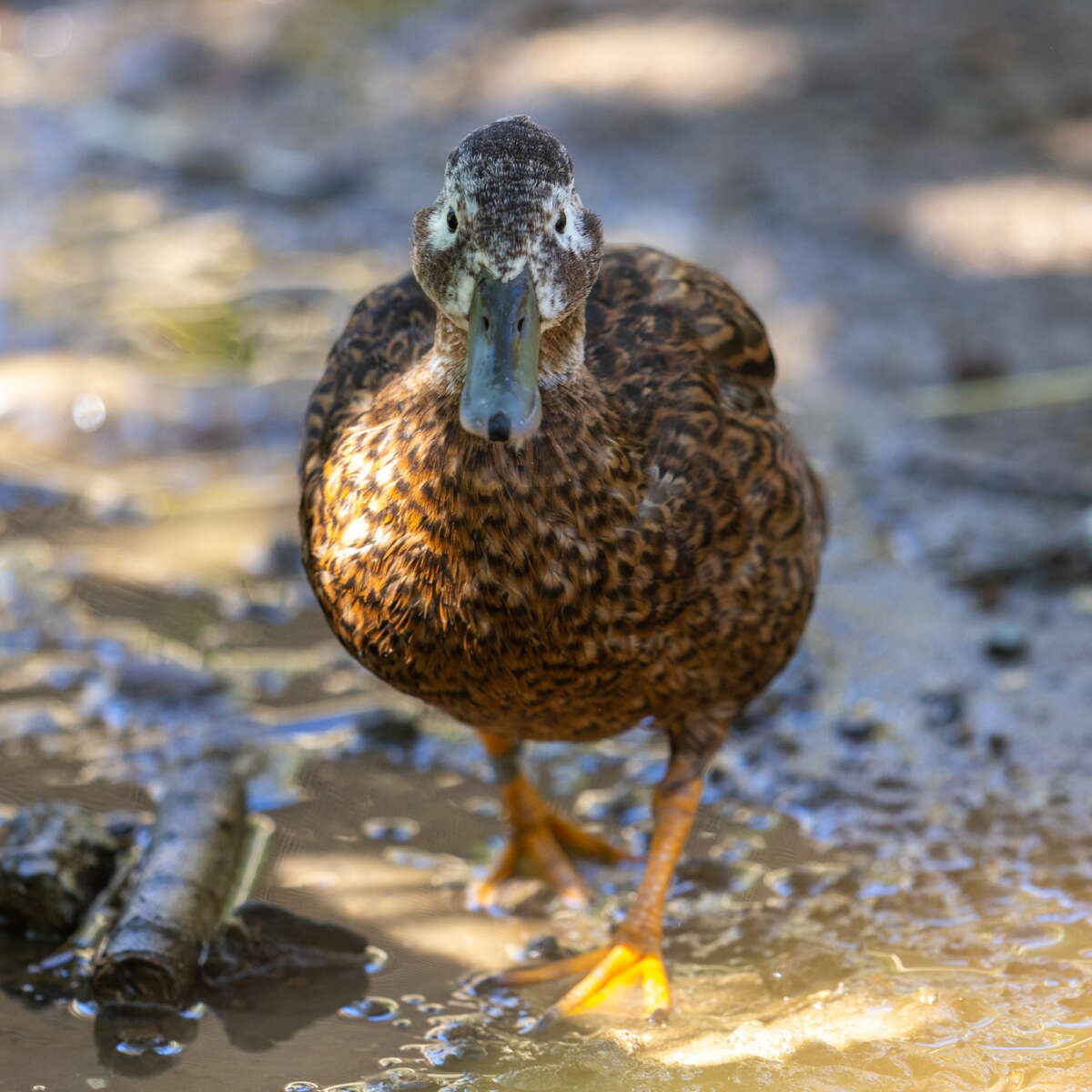
Laysan Duck at Safari West, by Mark Pressler
The conservation story of the Laysan duck is far from over. As climate change causes rising sea levels and more intense storms, the low lying islands that Laysan ducks inhabit become more dangerous. Rising temperatures also favor the bacteria causing botulism outbreaks. Battles to conserve endangered species around the world are filled with stories like this—hard-fought victories quickly being overshadowed by new threats to fight against. The endless push against human-caused extinction can feel overwhelming and discouraging at times. But, out in the middle of the Pacific, there are three populations of bold, chestnut-brown birds unaware of the existential threats to their species. They wake up every day, drink from freshwater seeps, preen their feathers to perfection, feed on invertebrates, take naps, go to the beach, get along with their millions of seabird neighbors, raise their young, and do their best to survive. The problems their species face are too large for them to perceive or confront themselves. We brought them to the brink of extinction, so it’s on us to bring them back. Funding in conservation is often heavily skewed towards the larger and more obvious species, but those of us who truly wish to preserve biodiversity on this planet value all unique forms of life. Laysan ducks may not be the biggest attention grabbers out there, but they are worthy of existence—just as much as giraffes, rhinos, zebras, or cheetahs.
How Can You Help?
The Hawaii Wildlife Center conducts annual training of the field teams that work with Laysan ducks in the wild, as well as consulting on treatments of ducks affected by botulism and assisting with translocation and husbandry efforts, including the teams on Kure Atoll restoring the bird’s habitat. Learn more about their work and support them here:
